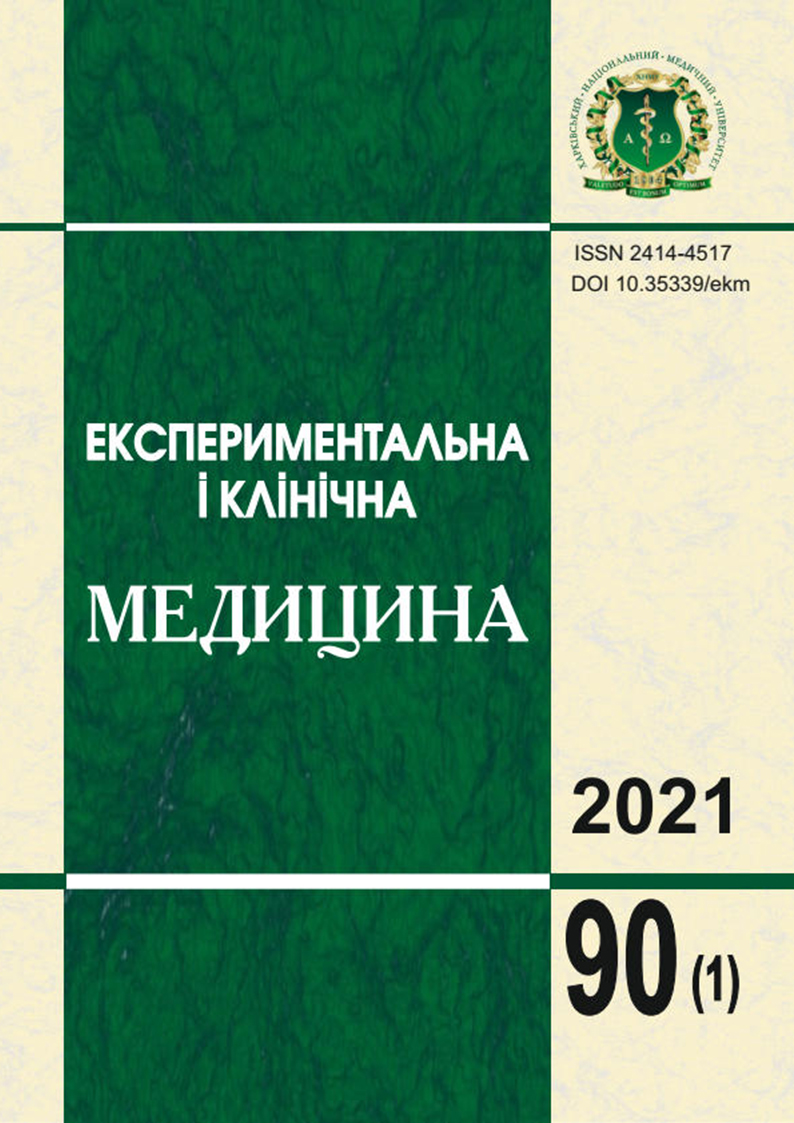Abstract
The work considers the main directions, results of experimental and clinical researches of a role of immunogenic cell death in verotherapy of malignant neoplasms. Cell death under the influence of oncolytic viruses, which occurred in the scenario of immunogenic cell death with the release of dangerously associated molecular patterns, was estimated. Clinical cases were divided by us into 2 types according to the method of activating the stress agent of the endoplasmic reticulum. Precisely those that influenced directly on structures inside the cell besides the endoplasmic reticulum, launching its stress indirectly through targets such as cytoplasmic proteins, membrane proteins and channels, proteins of the DNA replication system, and those that launched endoplasmic reticulum stress acting directly on the endoplasmic reticulum and breaking its work. The influence of oncolytic viruses on cells of malignant neoplasms is estimated. In our opinion, a significant positive difference between oncolytic viruses and other inducers of immunogenic cell death is that the infected cell with oncolytic viruses secretes pathogen-associated molecular patterns, which are structural molecules and waste products. Such additional stimulation may enhance the activity of immunocytes and increase the efficiency of antigen presentation. We have observed that cells with low-affinity T-cell receptors can escape negative selection, but their activity is usually insufficient to launch a full immune response due to the immunosuppressive microenvironment in the tumor. Immunogenic cell death may oppress this immunosuppression and increase the activity of the low-affinity clone of T lymphocytes for some time, but after the attenuation of immunogenic cell death, this pool is rapidly suppressed by the peripheral tolerogenic mechanisms and immunological memory hardly develops. In our opinion, this is especially actual for chemotherapeutic treatment regimens, because they have a limited duration due to the development of side effects. A detailed analysis of our own research and literature data allow to mention that oncolytic viruses seem to be an effective solution as an inducer of immunogenic cell death - they multiply in the tumor and cause immunogenic cell death for a long time while they are able to infect other tumor cells, which сonsequently allow recommending them as a stage of combined treatment of patients with oncopathology.
Keywords: oncology, cell death, immunogenic apoptosis, oncolytic viruses.
References
Schirrmacher V. Signaling through RIG-I and type I interferon receptor: Immune ac-tivation by Newcastle disease virus in man versus immune evasion by Ebola virus (Review). International Journal of Molecular Medicine. 2015;36(1):3-10. DOI: 10.3892/ijmm.2015.2213. PMID: 25998621.
Johnson DB, Puzanov I, Kelley MC. Talimogene laherparepvec (T-VEC) for the treatment of advanced melanoma. Immunotherapy. 2015;7(6):611-9. DOI: 10.2217/imt.15.35. PMID: 26098919. PMCID: PMC4519012.
Lundstrom K. Latest trends in cancer therapy applying viral vectors. Future Virol. 2017;12(11): 667-84. DOI:10.2217/fvl-2017-0070.
Lin Y, Zhang H, Liang J, Li K, Zhu W, Fu L, et al. Identification and characteriza-tion of alphavirus M1 as a selective oncolytic virus targeting ZAP-defective human cancers. Proc. Natl. Acad. Sci. USA. 2014;111(42):E4504-12. DOI: 10.1073/pnas.1408759111. PMID: 25288727. PMCID: PMC4210284.
Tazawa H, Kuroda S, Hasei J, Kagawa S, Fujiwara T. Impact of autophagy in onco-lytic adenoviral therapy for cancer. Int. J. of Mol. Sci. 2017;18(7):1479. DOI: 10.3390/ijms18071479. PMID: 28698504. PMCID: PMC5535969.
Lin E, Nemunaitis J. Oncolytic viral therapies. Cancer Gene. Ther. 2004;11(10):643-64. DOI: 10.1038/sj.cgt.7700733. PMID: 15286681.
Kaufman HL, Kohlhapp FJ, Zloza A. Oncolytic viruses: a new class of immunothera-py drugs. Nat. Rev. Drug. Discov. 2015;14(9):642-62. DOI: 10.1038/nrd4663. PMID: 26323545. PMCID: PMC7097180.
Verheije MH, Rottier PJ. Retargeting of viruses to generate oncolytic agents. Adv. Virol. 2012;2012:798526. DOI: 10.1155/2012/798526. PMID: 22312365. PMCID: PMC3265223.
Marelli G.., Sica A, Vannucci L, Allavena P. Inflammation as target in cancer therapy. Current Opinion in Pharmacology, 2017;35:57-65. DOI: 10.1016/j.coph.2017.05.007. PMID: 28618326.
Iankov ID, Blechacz B, Liu C, Schmeckpeper JD, Tarara JE, Federspiel MJ, et al. Infected cell carriers: a new strategy for systemic delivery of oncolytic measles viruses in can-cer virotherapy. Molecular Therapy. 2007;15(1):114-22. DOI: 10.1038/sj.mt.6300020. PMID: 17164782.
Ilett EJ, Barcena M., Errington-Mais F., Griffin S., Harrington KJ, Pandha HS, et al. Internalization of oncolytic reovirus by human dendritic cell carriers protects the virus from neutralization. Clin. Cancer Res. 2011;17(9):2767-76. DOI: 10.1158/1078-0432.CCR-10-3266. PMID: 21389099. PMCID: PMC3087679.
Suzuki S, Ishida T, Yoshikawa K, Ueda R. Current status of immunotherapy. Japa-nese Journal of Clinical Oncology, 2016;46(3):191-203. DOI: 10.1093/jjco/hyv201. PMID: 26819277.
Harrington KJ, Michielin O, Malvehy J, Grüter IP, Grove L, Frauchiger AL, et al. A practical guide to the handling and administration of talimogene laherparepvec in Europe. On-co Targets Therapy. 2017;10:3867-80. DOI: 10.2147/OTT.S133699. PMID: 28814886. PMCID: PMC5546812.
Swann JB, Smyth MJ. Immune surveillance of tumors. The Journal of Clinical Inves-tigation. 2007;117(5):1137-46. DOI: 10.1172/JCI31405
Jing H, Lee S. NF-κB in cellular senescence and cancer treatment. Molecules and Cells. 2014;37(3):189-95. DOI: 10.14348/molcells.2014.2353.
Schirrmacher V. Immunobiology of Newcastle disease virus and its use for prophy-lactic vaccination in poultry and as adjuvant for therapeutic vaccination in cancer patients. In-ternational Journal of Molecular Sciences. 2017;18(5):1103. DOI: 10.3390/ijms18051103. PMID: 28531117. PMCID: PMC5455011.
He CB, Lao XM, Lin XJ. Transarterial chemoembolization combined with recombi-nant human adenovirus type 5 H101 prolongs overall survival of patients with intermediate to advanced hepatocellular carcinoma: a prognostic nomogram study. Chinese Journal of Cancer. 2017;36(1):59. DOI: 10.1186/s40880-017-0227-2. PMID: 28728568. PMCID: PMC5518415.
Park MH, Hong JT. Roles of NF-κB in cancer and inflammatory diseases and their therapeutic approaches. Cells. 2016;5(2):15. DOI: 10.3390/cells5020015. PMID: 27043634. PMCID: PMC4931664.
Martin NT, Bell JC. Oncolytic virus combination therapy: Killing one bird with two stones. Molecular Therapy. 2018;26(6):1414-22. DOI: 10.1016/j.ymthe.2018.04.001.
Schirrmacher V. Fifty years of clinical application of Newcastle disease virus: time to celebrate! Biomedicines. 2016;4(3):16. DOI: 10.3390/biomedicines4030016. PMID: 28536382. PMCID: PMC5344264.
Yamamoto Y, Nagasato M, Yoshida T, Aoki K. Recent advances in genetic modifi-cation of adenovirus vectors for cancer treatment. Cancer Sci. 2017;108(5):831-7. DOI: 10.1111/cas.13228. PMID: 28266780. PMCID: PMC5448613.
Trehub Y, Havrilov. A. Oncolytic Viruses as Immunotherapeutic Agents. Cancer Immunology. Bench to Bedside Immunotherapy of Cancers. Rezaei N, editors. Second Edi-tion. Tehran: Tehran University of Medical Sciences; 2020. Chapter 27, р. 509-41. DOI:10.1007/978-3-030-50287-4.

